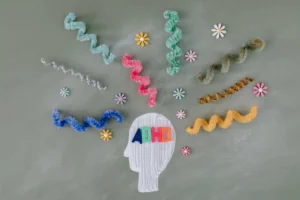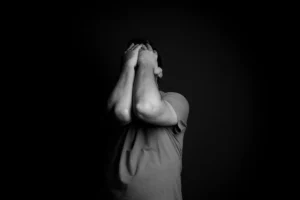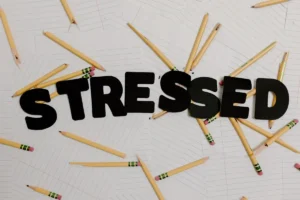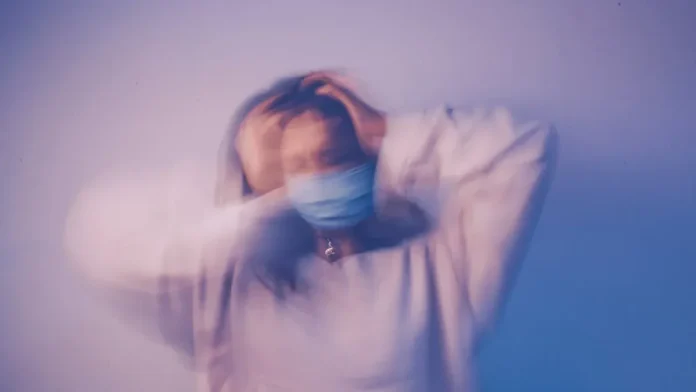Bipolar disorder, formerly known as manic-depressive illness, is a mental health condition characterized by extreme mood swings that include emotional highs (mania or hypomania) and lows (depression). These mood swings can affect sleep, energy, activity, judgment, behavior, and the ability to think clearly. Here’s a comprehensive overview of bipolar disorder, including its types, stages, symptoms, causes, diagnosis, treatment, and more.
Bipolar disorder is a mood disorder that causes extreme fluctuations in mood, energy, and activity levels. It is classified as a serious mental health condition because it can lead to severe impairments in thinking, decision-making, and social interactions. According to the Diagnostic and Statistical Manual of Mental Disorders (DSM-5), bipolar disorder is divided into different types, including Bipolar I, Bipolar II, and Cyclothymic Disorder, based on the severity and pattern of mood episodes.
Overview of the Condition as a Mood Disorder
Bipolar disorder belongs to a group of mood disorders, meaning it primarily affects emotions and mood regulation. Unlike typical mood swings, bipolar episodes are intense, prolonged, and disruptive. The disorder consists of three main phases:

Manic or Hypomanic Episodes
Periods of elevated mood, high energy, impulsivity, and reduced need for sleep.
Depressive Episodes
Periods of deep sadness, low energy, hopelessness, and loss of interest in daily activities.
Mixed Episodes
A combination of both manic and depressive symptoms occurring simultaneously.
Because these mood shifts can be extreme, individuals with bipolar disorder often struggle with maintaining stability in their personal and professional lives.
Who is Affected?
Bipolar disorder affects people of all ages, genders, and backgrounds. Here are some key statistics:
Global Prevalence
About 1-3% of the world’s population is diagnosed with bipolar disorder at some point in their lives.
Gender Differences
It affects men and women equally, but men tend to experience more manic episodes, while women are more likely to have depressive episodes.
Age of Onset
The average age of onset is between 15 and 25 years old, though it can develop later in life.
Family History
Individuals with a family history of bipolar disorder are at a higher risk of developing the condition.
Suicide Risk
People with bipolar disorder have a higher risk of suicide compared to the general population. Studies suggest that 15-20% of individuals with bipolar disorder attempt suicide at least once in their lifetime.
Importance of Understanding Bipolar Disorder

Understanding bipolar disorder is crucial for several reasons:
Early Diagnosis and Treatment
Recognizing symptoms early can lead to proper medical intervention, which helps prevent severe episodes and complications.
Reducing Stigma
Many people misunderstand bipolar disorder, leading to stigma and discrimination. Educating the public can promote empathy and acceptance.
Improving Quality of Life
With proper treatment, individuals with bipolar disorder can lead fulfilling and productive lives.
Supporting Loved Ones
Family and friends play a critical role in helping individuals manage their condition. Awareness and education can improve relationships and support systems.
Advancing Research
Ongoing research into bipolar disorder helps improve treatment options, reducing the burden of the condition on individuals and society.
Types of Bipolar Disorder

Bipolar disorder is a complex mental health condition characterized by extreme mood swings. It is categorized into several types based on the nature and severity of these mood episodes. Understanding the different types of bipolar disorder is crucial for accurate diagnosis and effective treatment.
Bipolar I Disorder
Bipolar I Disorder is defined by the presence of at least one manic episode, which may be preceded or followed by hypomanic or major depressive episodes. Manic episodes are intense periods of elevated mood, increased energy, and impulsive behavior that can last for at least seven days or require hospitalization.
Manic and Depressive Episodes
During a manic episode, individuals may experience heightened energy, reduced need for sleep, and engage in risky behaviors. Depressive episodes, on the other hand, involve persistent sadness, loss of interest in activities, and feelings of worthlessness, lasting at least two weeks.
Diagnosis Criteria
The diagnosis of Bipolar I Disorder is based on specific criteria outlined in the DSM-5, which include the duration and impact of these episodes on daily functioning.
Bipolar II Disorder
Differences from Bipolar I
Bipolar II Disorder differs from Bipolar I in that it involves hypomanic episodes rather than full-blown mania. Hypomania is a less severe form of mania, where individuals experience elevated mood and increased energy but without the significant impairment in functioning or the need for hospitalization.
Hypomania vs. Full-Blown Mania
While hypomania shares some features with mania, such as increased energy and creativity, it does not cause the same level of disruption in daily life. However, Bipolar II Disorder also includes major depressive episodes, which can be debilitating.
Cyclothymic Disorder (Cyclothymia)
Milder Mood Swings
Cyclothymic Disorder, also known as Cyclothymia, is a milder form of bipolar disorder characterized by chronic mood instability. Individuals with Cyclothymia experience numerous periods of hypomanic symptoms and depressive symptoms that do not meet the full criteria for hypomanic or major depressive episodes.
Long-Term Effects and Risks
These mood swings persist for at least two years in adults or one year in adolescents and can lead to significant emotional challenges and disruptions in daily life. While the symptoms are less severe, the long-term effects of Cyclothymia can still pose risks, including the potential for developing more severe forms of bipolar disorder.
Other Specified and Unspecified Bipolar Disorders
Atypical Cases
Other Specified and Unspecified Bipolar Disorders encompass cases that do not fit neatly into the categories of Bipolar I, Bipolar II, or Cyclothymia. These include atypical presentations where individuals experience significant mood disturbances that impact their lives but do not meet the specific diagnostic criteria for the other types.
Flexibility in Diagnosis
These categories allow clinicians to diagnose and treat individuals who exhibit symptoms of bipolar disorder but fall outside the traditional classifications, ensuring they receive appropriate care.
Symptoms of Bipolar Disorder

Bipolar disorder is characterized by a range of symptoms that vary depending on the type of episode a person is experiencing. These symptoms can significantly impact daily life and overall well-being. Below is a breakdown of the symptoms associated with different types of episodes.
1. Manic Symptoms
Extreme Energy Levels and Restlessness
During a manic episode, individuals often experience a surge in energy levels, making them feel unusually active and restless. This heightened energy can lead to increased productivity but may also result in agitation.
Impulsive Behavior and Risky Decisions
Manic episodes are often marked by impulsive actions, such as excessive spending, reckless driving, or engaging in risky sexual behaviors. These decisions are typically made without considering the consequences.
Grandiosity and Overconfidence
A person in a manic state may exhibit an inflated sense of self-esteem or grandiosity. They might believe they have special powers, talents, or abilities that are not grounded in reality.
Decreased Need for Sleep
One of the hallmark symptoms of mania is a reduced need for sleep. Individuals may feel fully rested after only a few hours of sleep or may go days without sleeping.
Rapid Speech and Racing Thoughts
Manic episodes often involve rapid, pressured speech and a flood of racing thoughts. The person may jump from one topic to another, making it difficult for others to keep up.
2. Hypomanic Symptoms
Milder Version of Mania
Hypomania is a less severe form of mania. While the symptoms are similar, they are not as intense and do not cause significant impairment in daily functioning.
No Severe Impairment in Daily Life
Unlike full-blown mania, hypomania does not typically lead to hospitalization or severe disruption in social or occupational activities. However, it can still affect relationships and decision-making.
3. Depressive Symptoms
Persistent Sadness and Hopelessness
Depressive episodes are characterized by prolonged feelings of sadness, emptiness, and hopelessness. These emotions can be overwhelming and difficult to manage.
Fatigue and Low Energy
Individuals experiencing a depressive episode often feel extremely tired and lack the energy to perform even simple tasks. This fatigue can be both physical and mental.
Loss of Interest in Daily Activities
A common symptom of depression is anhedonia, or the loss of interest in activities that were once enjoyable. This can include hobbies, social interactions, and work.
Sleep Disturbances (Insomnia or Oversleeping)
Depressive episodes can disrupt sleep patterns, leading to either insomnia (difficulty falling or staying asleep) or hypersomnia (excessive sleeping).
Suicidal Thoughts or Behaviors
In severe cases, depressive episodes can lead to suicidal thoughts or behaviors. It is crucial to seek immediate help if these symptoms are present.
4. Mixed Episodes Symptoms
Experiencing Manic and Depressive Symptoms Simultaneously
Mixed episodes involve the simultaneous occurrence of manic and depressive symptoms. This can create a confusing and distressing experience for the individual.
High Energy but Negative Mood
During a mixed episode, a person may have the high energy levels typical of mania but also experience the negative mood and thoughts associated with depression. This combination can increase the risk of impulsive and harmful behaviors.
Stages of Bipolar Disorder

Bipolar disorder is a chronic condition that progresses through different stages. Understanding these stages can help individuals, caregivers, and healthcare professionals manage the disorder effectively. The course of bipolar disorder typically follows four key stages:
1. Prodromal Stage
The prodromal stage refers to the period before a full-blown manic or depressive episode occurs. During this phase, individuals may experience subtle changes in mood, behavior, and energy levels. These early symptoms can last for weeks, months, or even years before an official diagnosis is made.
Ordinary Warning Signs:
- Mood swings that are more intense than usual
- Difficulty sleeping or changes in sleep patterns (insomnia or oversleeping)
- Increased irritability, anxiety, or restlessness
- Trouble concentrating or making decisions
- Feeling unusually euphoric or excessively sad without a clear reason
- Decreased motivation and withdrawal from social activities
- Impulsive or risk-taking behavior
- Sensitivity to stress and overstimulation
Importance of Early Detection:
Identifying and addressing symptoms at this stage can prevent the condition from worsening. Early intervention, such as therapy or lifestyle changes, may help delay or reduce the severity of future episodes.
2. Acute Episode Stage
This is the most disruptive and recognizable stage of bipolar disorder. It includes either manic/hypomanic episodes, depressive episodes, or mixed episodes where both occur simultaneously.
Manic Episode Symptoms:
- Extremely high energy levels and restlessness
- Rapid speech and racing thoughts
- Decreased need for sleep (feeling energetic after little rest)
- Inflated self-esteem or grandiosity
- Engaging in risky behaviors (spending sprees, reckless driving, impulsive decisions)
- Increased goal-directed activity but often without completion
- Easily distracted and unable to focus
Hypomanic Episode Symptoms (Milder Mania):
- Similar to a manic episode but less severe
- Does not lead to hospitalization or major impairment
- Can sometimes result in increased productivity or creativity
Depressive Episode Symptoms:
- Persistent sadness, hopelessness, or emptiness
- Fatigue and low energy
- Loss of interest in activities once enjoyed
- Changes in appetite (weight loss or gain)
- Sleep disturbances (insomnia or excessive sleeping)
- Difficulty concentrating and making decisions
- Suicidal thoughts or self-harm behaviors
Mixed Episode Symptoms:
- Symptoms of both mania and depression occurring at the same time
- High energy but a negative mood (agitation, irritability)
- Risky behavior while feeling hopeless or suicidal
Impact of Acute Episodes:
These episodes can significantly affect an individual’s life, leading to difficulties in relationships, work, and overall well-being. Severe manic or depressive episodes may require hospitalization for stabilization.
3. Recovery/Remission Stage
After an acute episode, individuals enter a recovery phase where symptoms gradually subside. This stage is essential for regaining stability and resuming daily activities.
Characteristics of the Recovery Stage:
- Mood begins to stabilize, but lingering symptoms may persist
- Energy levels and sleep patterns start returning to normal
- Cognitive function (concentration, decision-making) improves
- The individual may feel exhausted from previous mood swings
- Emotional healing and reflection on the recent episode
Challenges in This Stage:
- Feeling overwhelmed or guilty about actions during a manic episode
- Struggling with motivation after a depressive episode
- Risk of relapse if proper treatment is not continued
Importance of Professional Support:
Therapy, medication, and lifestyle adjustments play a crucial role in preventing another episode and ensuring long-term stability.
4. Maintenance Stage
The maintenance stage focuses on long-term management of bipolar disorder to prevent future episodes. People in this stage may feel “normal,” but continued treatment is crucial to prevent relapse.
Key Strategies for Long-Term Management:
Medication Adherence:
Continuing prescribed mood stabilizers, antipsychotics, or antidepressants as advised by a doctor
Regular Therapy:
Ongoing psychotherapy (e.g., Cognitive Behavioral Therapy) to manage stress and triggers
Healthy Lifestyle:
- Maintaining a consistent sleep schedule
- Engaging in regular exercise and a balanced diet
- Avoiding alcohol, drugs, and excessive caffeine
Stress Management:
Practicing mindfulness, meditation, or relaxation techniques
Support System:
Staying connected with family, friends, or support groups
Tracking Mood Changes:
Keeping a mood diary or using mental health apps to recognize early signs of relapse
Warning Signs of Relapse:
- Sudden changes in sleep, energy, or appetite
- Increased irritability, anxiety, or mood swings
- Thoughts of self-harm or suicide
- Engaging in risky behaviors
- Feeling disconnected from reality (hallucinations or delusions)
Early intervention when noticing these warning signs can help prevent a full-blown episode.
Causes and Risk Factors of Bipolar Disorder
Bipolar disorder is a complex mental health condition with multiple contributing factors. Researchers believe that a combination of genetic, neurobiological, environmental, and hormonal influences contribute to its development. Understanding these causes can help in early detection, prevention, and effective treatment.
1. Genetic Factors
Bipolar disorder has a strong genetic component, meaning it can run in families. However, genetics alone do not determine whether someone will develop the condition; environmental factors also play a role.
Evidence from Research:
- Studies show that first-degree relatives (parents, siblings) of someone with bipolar disorder have a 10% to 15% increased risk of developing the condition.
- If one identical twin has bipolar disorder, the other twin has a 40% to 70% chance of developing it.
- Several genes linked to mood regulation and neurotransmitter function (such as dopamine and serotonin) may contribute to bipolar disorder.
2. Neurobiological Causes
Brain structure and chemical imbalances are significant factors in bipolar disorder. Research indicates that abnormalities in brain function and neurotransmitter levels may contribute to mood instability.
Neurotransmitters Involved:
Dopamine:
Regulates mood, reward, and motivation. Excess dopamine may contribute to manic episodes, while low levels can lead to depression.
Serotonin:
Plays a role in mood stability. Low serotonin levels are often linked to depression and mood swings.
Norepinephrine:
Affects alertness and energy. High levels can contribute to mania, while low levels are linked to depressive episodes.
Brain Structure Differences in Bipolar Disorder:
Amygdala (emotional regulation):
Studies suggest that people with bipolar disorder may have a hyperactive amygdala, leading to stronger emotional reactions.
Prefrontal Cortex (decision-making, impulse control):
Reduced activity in this area can lead to poor judgment and impulsivity, especially during manic episodes.
Hippocampus (memory and stress response):
May be smaller or function differently in individuals with bipolar disorder, affecting emotional regulation.
3. Environmental Triggers (Stress, Trauma, Substance Abuse)
Environmental factors can trigger or worsen bipolar disorder, especially in those with a genetic predisposition.
Common Environmental Triggers:
Chronic Stress:
High levels of stress from work, relationships, or financial problems can trigger manic or depressive episodes.
Traumatic Life Events:
Childhood abuse, neglect, loss of a loved one, or major life changes can increase the risk of developing bipolar disorder.
Substance Abuse:
Alcohol, drugs, and stimulants can worsen mood swings and interfere with medication effectiveness.
Sleep Disturbances:
Irregular sleep patterns, such as insomnia or sleep deprivation, can trigger manic episodes.
4. Hormonal Imbalances
Hormones play a crucial role in mood regulation. Imbalances in certain hormones may contribute to bipolar disorder.
Hormones Linked to Bipolar Disorder:
Cortisol (Stress Hormone):
High cortisol levels, especially during stressful situations, can trigger manic or depressive episodes.
Thyroid Hormones:
Hypothyroidism (low thyroid function) is linked to depression, while hyperthyroidism (overactive thyroid) can contribute to mania.
Sex Hormones (Estrogen & Testosterone):
Fluctuations in estrogen (in women) and testosterone (in men) may impact mood stability.
Treatment and Management
Bipolar disorder is a lifelong condition, but with the right treatment and management strategies, individuals can lead stable and fulfilling lives. Treatment typically involves a combination of medication, psychotherapy, and lifestyle changes tailored to the individual’s needs.
Medication Options
Mood Stabilizers (Lithium, Valproate)
Mood stabilizers are the cornerstone of bipolar disorder treatment. Medications like Lithium and Valproate help regulate mood swings, preventing both manic and depressive episodes. Regular monitoring is required to ensure proper dosage and minimize side effects.
Antipsychotics
Antipsychotic medications, such as Olanzapine, Quetiapine, and Risperidone, are often used to manage symptoms of mania or mixed episodes. They can also be effective in treating depressive episodes when combined with other bipolar disorder medications.
Antidepressants (Used with Caution)
Antidepressants may be prescribed to address depressive symptoms, but they are used cautiously because they can trigger manic episodes in some individuals. They are typically prescribed alongside mood stabilizers for bipolar disorder or antipsychotics to reduce this risk.
Psychotherapy and Counseling
Cognitive Behavioral Therapy (CBT)
Cognitive Behavioral Therapy is a widely used therapeutic approach that helps individuals identify and change negative thought patterns and behaviors. It is particularly effective in managing depressive symptoms and preventing relapse.
Family Therapy
Family therapy involves the individual and their family members in the treatment process. It aims to improve communication, reduce stress within the family, and provide support for both the individual and their loved ones.
Psychoeducation
Psychoeducation focuses on educating individuals and their families about bipolar disorder, its symptoms, and treatment options. Understanding the condition helps individuals take an active role in managing their illness and reduces stigma.
Lifestyle Changes and Self-Help Strategies
Stress Management
Stress can trigger mood episodes, so learning effective stress management techniques is crucial. Practices such as mindfulness, meditation, and deep breathing can help individuals stay calm and balanced.
Healthy Diet and Exercise
A balanced diet and regular physical activity play a significant role in maintaining mental health. Exercise, in particular, has been shown to improve mood and reduce symptoms of depression and anxiety.
Maintaining a Sleep Routine
Sleep disturbances are common in bipolar disorder, so establishing a consistent sleep routine is essential. Going to bed and waking up at the same time every day can help regulate mood and energy levels.
Avoiding Alcohol and Drugs
Substance abuse can worsen symptoms and interfere with treatment. Avoiding alcohol and recreational drugs is critical for maintaining stability and preventing relapse.
Advanced Treatment Options
Electroconvulsive Therapy (ECT)
ECT is a treatment option for severe cases of bipolar disorder that do not respond to medication or psychotherapy. It involves passing small electric currents through the brain to induce controlled seizures, which can help reset brain chemistry.
Transcranial Magnetic Stimulation (TMS)
TMS is a non-invasive procedure that uses magnetic fields to stimulate nerve cells in the brain. It is often used for treatment-resistant depression and has shown promise in managing bipolar disorder symptoms.
Long-Term Management
Regular Follow-Ups
Ongoing care and regular check-ups with a mental health professional are essential for monitoring symptoms and adjusting treatment plans as needed.
Support Groups
Joining support groups can provide individuals with a sense of community and shared understanding. Hearing from others who face similar challenges can be comforting and empowering.
Early Warning Signs
Learning to recognize early warning signs of mood episodes, such as changes in sleep patterns or energy levels, can help individuals take proactive steps to prevent full-blown episodes.
Challenges and Coping Strategies
Understanding Stigma
Stigma surrounding bipolar disorder often stems from misconceptions and lack of awareness. People may wrongly believe that individuals with bipolar disorder are unpredictable, dangerous, or incapable of leading normal lives.
Coping Strategies
Education:
Educate yourself and others about bipolar disorder to dispel myths and reduce stigma.
Advocacy:
Share your story or join advocacy groups to raise awareness and promote understanding.
Self-Acceptance:
Focus on your strengths and achievements rather than internalizing negative stereotypes.
Importance of a Support System
Family and Friends
A strong support system of family and friends can provide emotional comfort, practical assistance, and encouragement during difficult times. Loved ones can also help monitor symptoms and encourage adherence to treatment.
Support Groups
Joining support groups, either in-person or online, connects individuals with others who understand their experiences. These groups offer a safe space to share challenges, exchange coping strategies, and build a sense of community.
Coping Strategies
Open Communication:
Be honest with your support system about your needs and feelings.
Set Boundaries:
Clearly communicate your limits to avoid feeling overwhelmed.
Seek Professional Help:
Encourage family members to attend therapy or educational sessions to better understand bipolar disorder.
Developing Healthy Coping Mechanisms
Stress Management
Stress can trigger mood episodes, so learning to manage stress is crucial. Techniques such as mindfulness, meditation, and deep breathing can help maintain emotional balance.
Routine and Structure
Establishing a daily routine can provide stability and reduce the likelihood of mood swings. This includes consistent sleep, meal, and activity schedules.
Creative Outlets
Engaging in creative activities like art, music, or writing can be a therapeutic way to express emotions and reduce stress.
Physical Activity
Regular exercise, such as walking, yoga, or swimming, can improve mood, reduce anxiety, and boost overall well-being.
Coping Strategies
Journaling:
Keep a mood journal to track symptoms, triggers, and progress.
Hobbies:
Pursue hobbies that bring joy and a sense of accomplishment.
Relaxation Techniques:
Practice relaxation methods like progressive muscle relaxation or guided imagery.
Managing Triggers and Early Warning Signs
Identifying Triggers
Common triggers for mood episodes include stress, lack of sleep, substance use, and major life changes. Recognizing these triggers can help individuals take preventive measures.
Recognizing Early Warning Signs
Early warning signs of a mood episode may include changes in sleep patterns, energy levels, or mood. Paying attention to these signs allows for timely intervention.
Coping Strategies
Action Plan:
Work with your healthcare provider to create a plan for managing early symptoms.
Self-Monitoring:
Regularly check in with yourself to assess your mental state.
Reach Out:
Contact your support system or healthcare provider if you notice warning signs. Or you can find best bipolar disorder resources online.
Important Note:
The information provided here is for educational and informational purposes only and is not intended as a substitute for professional medical advice, diagnosis, or treatment. Always consult a qualified healthcare provider or mental health professional for personalized guidance regarding bipolar disorder or any other medical condition.




[…] a continuation and deeper exploration of the Bipolar Disorder case studies, focusing on the challenges, treatment adjustments, and long-term recovery strategies […]
[…] Bipolar disorder is a mental health condition that affects millions of people worldwide. It is characterized by extreme mood swings that include emotional highs (mania or hypomania) and lows (depression). While the term “bipolar disorder” is often used as a blanket term, there are actually several types, each with its own unique features. The three main types of bipolar disorder are Bipolar I Disorder, Bipolar II Disorder, and Cyclothymic Disorder. Let’s break down each type to better understand their differences and similarities. […]
[…] Family therapy helped educate his parents about Bipolar Disorder. […]
[…] Bipolar disorder is a mental health condition that causes extreme mood swings, ranging from emotional highs to emotional lows. These mood swings can affect a person’s energy levels, behavior, and ability to function in daily life. Recognizing the symptoms of bipolar disorder is crucial for getting the right diagnosis and treatment. Let’s explore Bipolar Disorder Symptoms in detail. […]
[…] addition to the medications mentioned above, other drugs may be used as mood stabilizers for bipolar disorder. These include antipsychotic medications like quetiapine, olanzapine, and aripiprazole, which can […]
[…] Does he communicate openly about his bipolar disorder with you? If he shares his struggles, explains his mood swings, and talks about how you can support […]
[…] Bipolar disorder, formerly known as manic depression, is a mental health condition that causes unusual shifts in mood, energy, activity levels, and the ability to carry out day-to-day tasks. These mood swings can be severe and can affect a person’s relationships, work, and overall quality of life. […]
[…] by a variety of factors. Sometimes, it is linked to mental health conditions like schizophrenia, bipolar disorder, or severe anxiety. Other times, it may be triggered by stress, trauma, or a lack of sleep. Certain […]
[…] Numerous clinical studies and decades of use have demonstrated lithium’s effectiveness across all phases of bipolar disorder: […]
[…] has emerged as a valuable medication for managing bipolar disorder, particularly for addressing depressive episodes. Unlike many other mood stabilizers that primarily […]
[…] represents one of the defining features of bipolar disorder, creating dramatic shifts in mood, energy, and behavior that differ markedly from a person’s […]